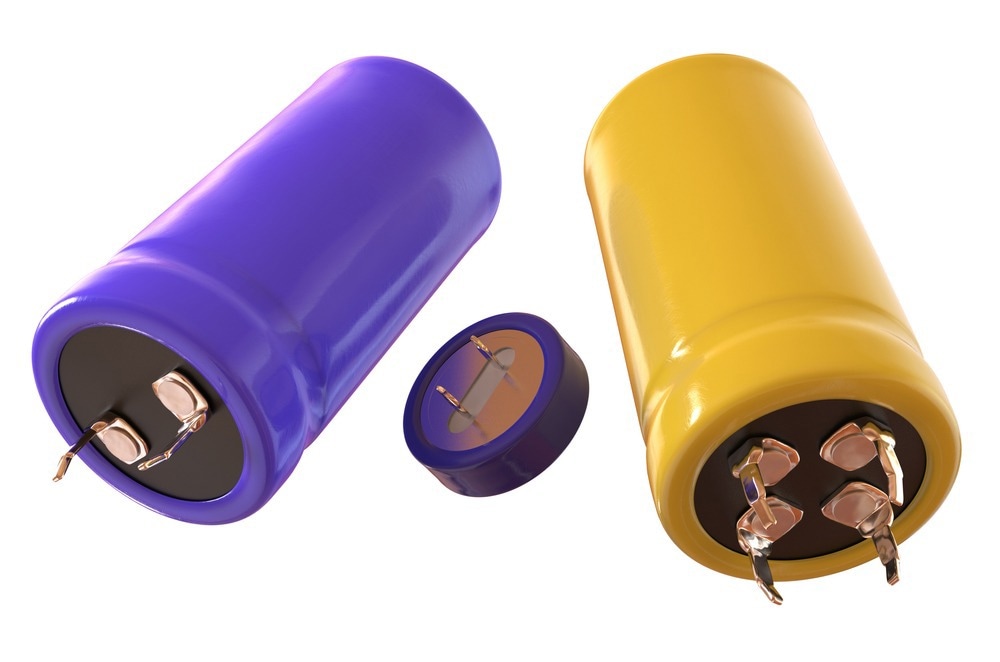Writing in the journal Carbohydrate Polymers, researchers from India and France have published a comprehensive review of nanocellulose-based aerogel electrodes for use in supercapacitors. Recent advances in research as well as challenges and future prospects are discussed in depth in the paper.

Study: Nanocellulose-based aerogel electrodes for supercapacitors: A review. Image Credit: Peter Sobolev/Shutterstock.com
Supercapacitors: A Key Energy Storage Technology
Environmental challenges associated with anthropogenic climate change have led to the development of innovative technologies and materials which can phase out humanity’s over-reliance on carbon-emitting fossil fuels.
The question of how to achieve sustainable and environmentally friendly energy storage solutions that can power advanced electronics and industrial processes is a crucial one. Batteries, fuel cells, and supercapacitors have emerged as the main technological solutions which can meet this challenge.
Supercapacitors possess several beneficial properties, such as high specific power density, rapid charge and discharge rates, low capacitance loss after multiple cycles, and extremely long cycle lives. These enhanced properties give them advantages over rechargeable batteries and conventional capacitors.
The structure of a supercapacitor is composed of two electrodes and a separator. Typically, electrodes are connected to terminals via the use of a metallic current collector, and depending on the materials used in positive and negative electrodes, supercapacitors are classified as symmetric or asymmetric supercapacitors.
In a symmetric supercapacitor, both electrodes are constructed from the same material, whereas in asymmetric devices, they are constructed from different materials. Two main types of these devices exist: pseudo-capacitors and electrical double-layer capacitors. Additionally, all-solid-state supercapacitors, which incorporate solid electrolytes, exist.
Challenges with Improving Supercapacitor Performance
The specific surface area, structure, and porosity of electrodes play a key role in the capacitance performance of electrical double-layer capacitors. To improve the performance of these devices, research has focused on the evaluation of new materials for electrodes. These include carbon nanofibers, mesoporous carbons, and activated carbon.
In pseudo-capacitors, energy is stored via reversible reactions between electrode and electrolyte. Conducting polymers such as PPy and PANI, as well as transition metal oxides, are commonly employed as electrode materials in these types of supercapacitors. Compared to electrical double-layer capacitors, pseudo-capacitors possess poorer cycling stability but higher specific capacitance.
Key challenges persist with improving the performance of supercapacitors, such as maintaining high power densities. Increasing the energy density of electrodes can be achieved by loading more active materials, but increased electrode thickness severely impacts device performance. 2D planar supercapacitors can overcome these issues, but they possess limited areal capacitance.
Aerogels have been explored in recent studies for use in electrodes, with advantages such as faster electron transfer due to their 3D network. Carbon-based aerogels have been extensively studied, but suffer from issues such as agglomeration, which hinders optimal electrochemical properties. One proposed aerogel material is cellulose, which overcomes issues with other materials and, furthermore, is a green and sustainable natural polymer.
The Study
Several studies in recent years have explored the use of nanocellulose-based aerogels in environmentally friendly and sustainable energy storage devices. However, research gaps exist in this field of study.
Many papers have focused on the general applications of these aerogels, with a lack of research on their specific use in supercapacitors. Moreover, there is a lack of knowledge on the mechanical properties of nanocellulose-based aerogels.
To address this research gap, the authors have presented a systematic and comprehensive review of current research into the application of nanocellulose-based aerogels for 3D porous supercapacitor electrode materials. The paper explores synthesis and drying technologies, fabrication of nanocellulose-based aerogels, and performance as electrodes for diverse types of supercapacitors, current challenges, and future prospects.
Review Findings
Supercapacitors are increasingly being investigated for applications such as wearable electronic devices and electric vehicles. Nanocellulose-based aerogels offer distinct advantages for electrodes in these devices such as high energy autonomy, performance, and long charge/discharge cycles compared to other materials. Furthermore, they possess benefits such as tunability and biodegradability.
The properties and electrochemical performance of aerogel-based supercapacitor electrodes are largely dependent on their porosity and surface area. This can be influenced by different preparation methods such as supercritical drying and freeze-drying. Challenges during preparation such as structural changes, low efficiency, and specialized equipment needs hinder their commercial viability.
Some critical challenges still exist in this area, and engineering the architecture of electrodes and optimizing preparation processes are key to producing devices with satisfactory performance. Other issues include the insulative nature of nanocellulose which reduces their conductivity as electrode materials and inferior mechanical stability in aerogels due to poor interfacial bonding.
Key research issues that future research should concentrate on include designing optimal carbonization processes, investigating strategies that retain pore morphology after compression, studying relationships between properties, and enhancing electrochemical performance after mechanical cycling. The current review has provided a wide-reaching knowledge base for future research in this field.
More from AZoM: A Closer Look at Semiconductor Test Equipment
Further Reading
Nargatti, K.I et al. (2022) Nanocellulose-based aerogel electrodes for supercapacitors: A review Carbohydrate Polymers 120039 [online, pre-proof] sciencedirect.com. Available at:
Disclaimer: The views expressed here are those of the author expressed in their private capacity and do not necessarily represent the views of AZoM.com Limited T/A AZoNetwork the owner and operator of this website. This disclaimer forms part of the Terms and conditions of use of this website.